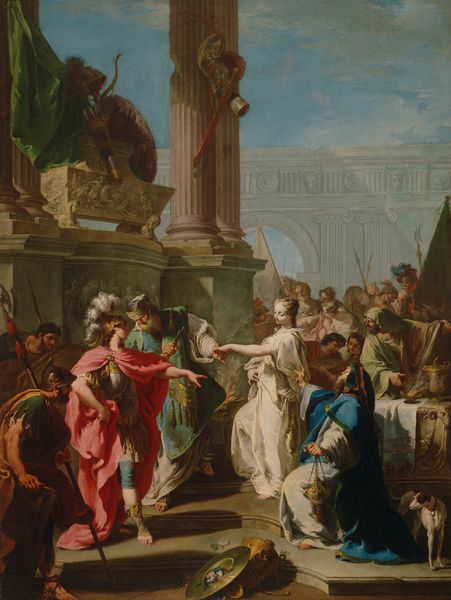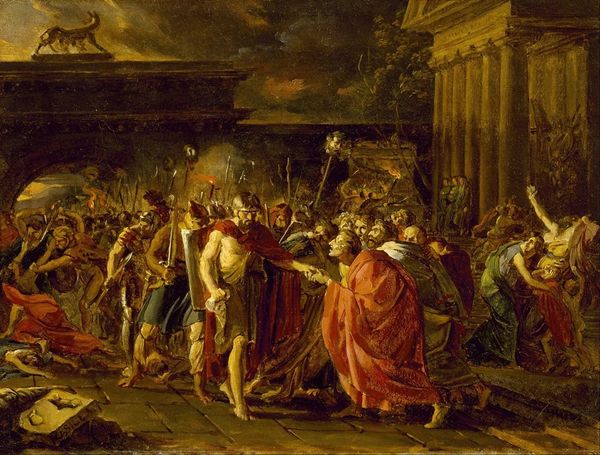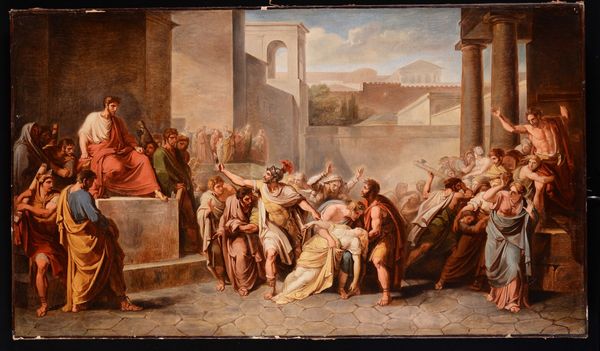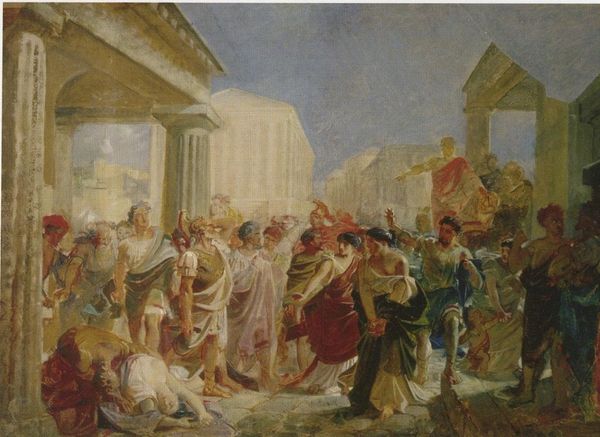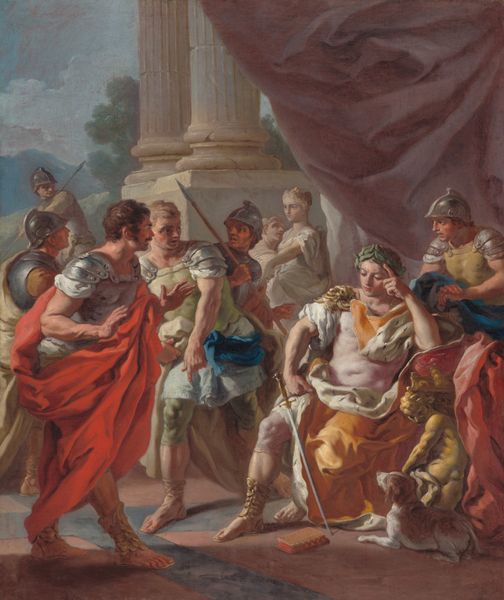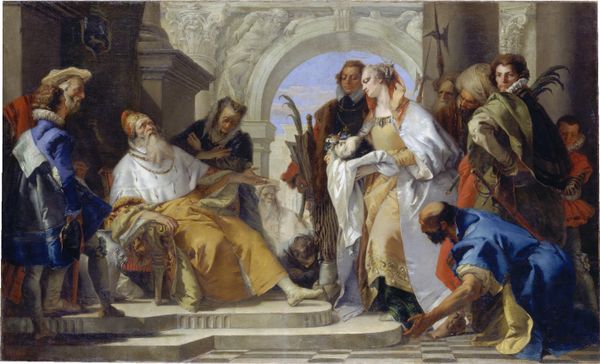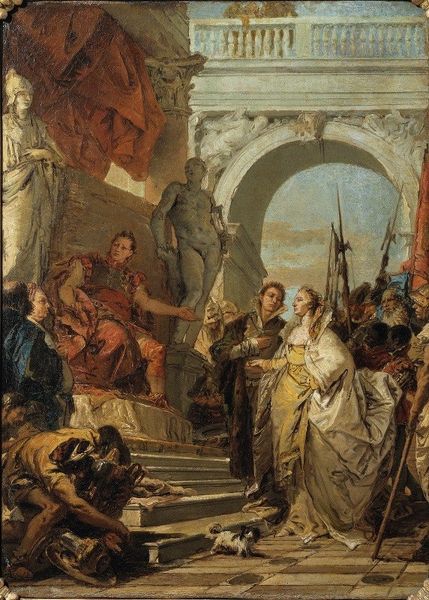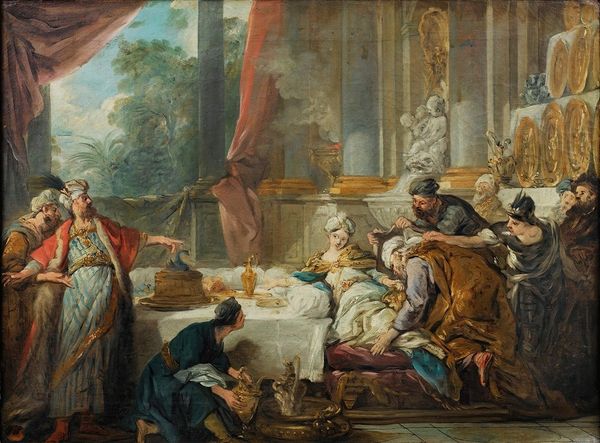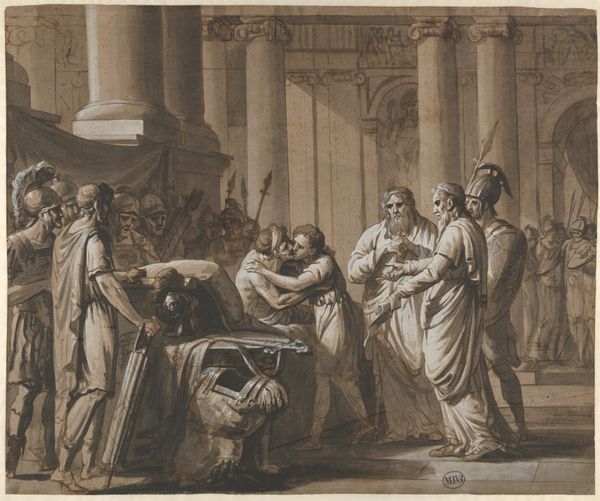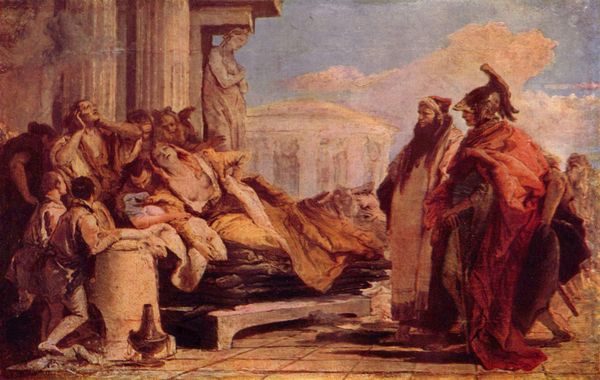
oil-paint
#
venetian-painting
#
baroque
#
oil-paint
#
figuration
#
oil painting
#
mythology
#
genre-painting
#
history-painting
Copyright: Public domain
Giambattista Pittoni painted “Sacrificio Di Polissena” with oils. In it, we see the Greek princess Polyxena being sacrificed, a story drawn from ancient texts. Pittoni painted this scene sometime in the 18th century, a period when powerful institutions like the church and the aristocracy shaped artistic taste. This painting uses visual codes to convey its meaning. The classical architecture, the garb, all evoke a sense of historical grandeur but the artist was not trying to recreate history. Instead, the painting presents ancient stories through the lens of 18th-century social values. Its formality, typical of the period's art academies, reinforces the established social order. Yet, by depicting a scene of ritualistic violence, the work also offers a subtle critique of power. To fully understand "Sacrificio Di Polissena," we turn to historical research, examining the art criticism of Pittoni's time. This helps reveal the complex relationship between art, institutions, and society.
Comments
No comments
Be the first to comment and join the conversation on the ultimate creative platform.
